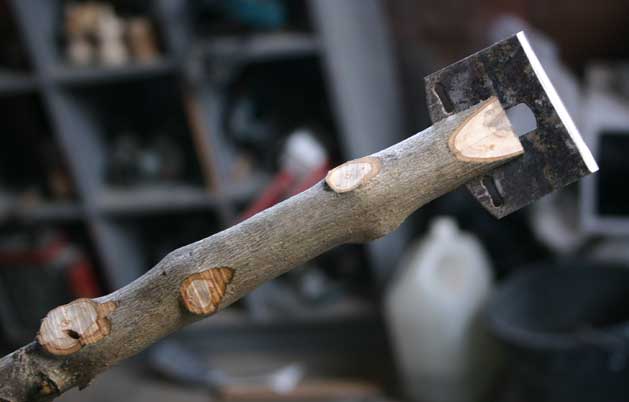keithkarl2007":yhtz2b2s said:
What's the best size to cut the abrasive sheets? I was thinking maybe divide it into 4???
Width will depend on your widest blade/iron, but it pays to determine the stroke length used, because this could be anything between 4" - 9", or whichever sheet length and width you're dealing with.
In terms of honing guides, narrow wheeled ones such as the Eclipse #36 are fine with blades upward from 1/2" in width, but can tend to rock when narrower blades are involved. Wider wheeled guides or ones with rollers work best with narrower blades, but the question you need to ask is whether or not the expense justifies end result. The same question applies to any sharpening regime you decide upon, but the trick is to try and keep whichever method you finally decide upon as simple as possible.
Naysayers tend to mistakenly neglect to consider whether or not proponents of freehand honing have ever tried/used jigged methods for any length of time. Most craftsmen/amateurs have experimented with at least some of the many sharpening techniques out there and it would be wrong to assume otherwise. There's nothing wrong with using jigs and guides, but often the simplest route is the way forward. Experience is gained via mistakes made during the learning process and all we tend to offer is a shortcut to correct sharpening technique without the pitfalls involved in experimentation with jigs and gadgets. We've already been there, bought the t-shirt several times and found the method we recommend to be the most cost effect and least time consuming route to achieving an accurate end result.
Less time spent setting up guides and gadgets = more time spent woodworking and creating things.
Honing an edge should involve no more than a half dozen - twenty swipes of an edge across stone/diamond plate/paper to produce/refresh a refined cutting edge. Any more than this and you've mistakenly allowed the edge to become too dull and should reconsider the need to hone/strop more frequently. A correctly honed edge need only involve the refinement of 1/32" metal at the very edge of a blade. A very slight rise above the plain of the primary bevel provides sufficient lift in the blade, which - in turn - makes it possible for the user produce a strong cutting edge.
I think some seem to confuse grinding with honing and the supposed need for precisely gauged text book angles, but the truth is both are separate activities - if using the two bevel method - and honing angles only need to be within ball park figures.
Food for Thought
If an edge needs refreshing once every fifteen minutes and it takes up to 3 minutes to refresh an edge using a guide, your down time would equate to approximately 80 minutes of lost time per 8 hour day. Obviously less time if edges require infrequent honing, but .......
If refreshing an edge at the same frequency, but freehand, the period for potential lost time would be approximately 78 seconds per hour (Involving up to 20 seconds per sitting). This amounts to approx 10.5 minutes per 8 hour day and virtually zero lost time.
If time is short and you're working on an amateur basis of say 6 hrs per week, you'd be losing up to 72 minutes of your valuable time per week to jig-aided honing. Add this to other down time and you soon come to realise where your valuable time is disappearing and why projects sometimes seem to take quite a period of time to complete.





